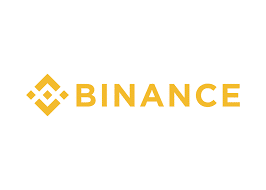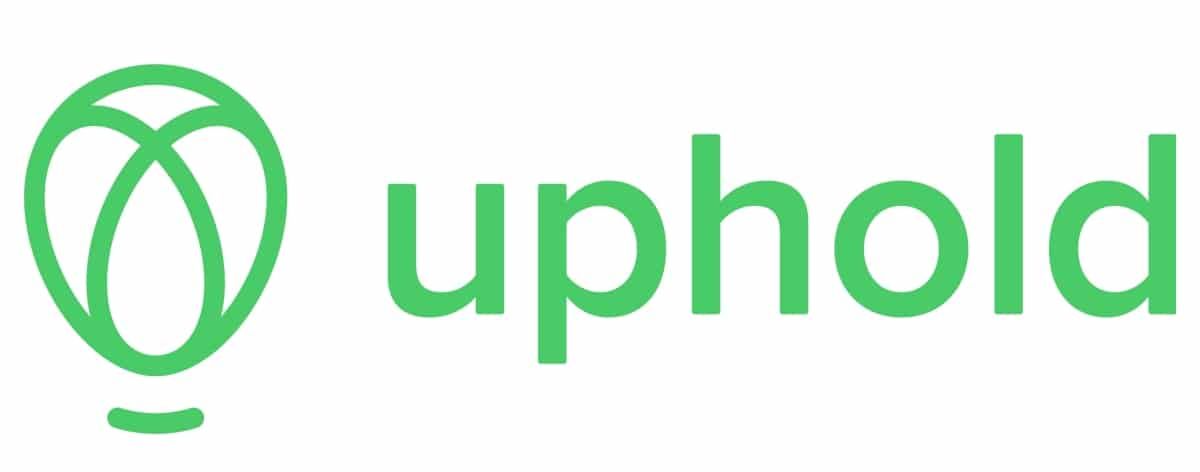
With Bitcoin and Ethereum seeing a resurgence, you might be wondering where are the best places to buy crypto? What are the best exchanges and platforms where you can invest in Bitcoin, or even altcoins?
Do you need to already have Bitcoin to invest?
Or do you transfer money from your bank account to somewhere and convert it to Bitcoin? What does that look like?
We’ll answer all of these questions and list 10 of the best cryptocurrency exchanges and platforms that allow you to buy Bitcoin and other tokens.
Going forward, we’ll use BTC, which is the symbol for Bitcoin on exchanges and trading platforms.
If you just want to earn a high return with crypto, you might consider a crypto savings account. These accounts pay up to 10%, but do come with risks (just like regular crypto investing). Check out the best cryptocurrency savings accounts here.
Editor's Picks For Best Crypto Exchanges:
- Best Overall: Coinbase
- Best For Trading: Kraken
- Best To Earn Interest: Crypto.com
- Best For Altcoins: Uphold
Promo: Interested in Crypto? Get $10 Through eToro! Get Stocks, Crypto, and beyond, all in one place - plus $10 when you sign up, on us. Open an account here >>
Best Crypto Exchanges and Investing Platforms
Here is our list of the 10 best cryptocurrency exchanges and investing or trading platforms. The cyrpto offers that appear on this site are from companies from which The College Investor receives compensation. This compensation may impact how and where products appear on this site (including, for example, the order in which they appear). The College Investor does not include all cryptocurrency exchanges or all crypto offers available in the marketplace.
1. Coinbase
Coinbase is by far the most popular and one of the best cryptocurrency exchanges because you can invest directly with USD. You can currently purchase Bitcoin, Ethereum, and Litecoin and 30+ other coins and tokens on the platform. Furthermore, you can earn interest on your USDT, and you can earn token rewards by completing various activities.
Plus, when you open a new Coinbase account, you get a $10 BTC bonus after you trade $100 if you sign up using our link!
Read our full Coinbase Review here.
Pros
Cons
Get $10 in free BTC!
2. Uphold
Uphold offers simple solution to trading multiple assets — open one account and trade multiple assets without making a trip back to cash. If you've every traded crypto, you'll know a lot of coins and tokens only trade in certain pairs, so you're always going back to BTC or ETH. But on Uphold, you can trade multiple assets directly.
Plus, Uphold is one of the few exchanges that allows you to trade XRP, DOGE, and more.
Read our full Uphold review here.
Pros
Cons
Terms Apply. Cryptoassets are highly volatile. Your capital is at risk.
3. Kraken
Kraken is one of the original crypto trading platforms and they have a good selection of coins and tokens to trade and invest in. They also allow margin trading. However, it's a real exchange, and not as easy to use as some of the top platforms on this list.
Kraken is one of the few platforms on this list that allow you to trade in DOGE and other, more risky, tokens.
Note: Kraken offers a limited section of coins and tokens to US customers versus international customers.
Read our full Kraken review here.
Pros
Cons
4. Gemini
Gemini is a popular platform to invest in crypto as it was one of the first major exchanges, and today it's one of the largest by assets.
Gemini supports most major cryptocurrencies, has decent support and engagement, and pays competitive interest rates on assets, if you qualify.
Plus, when you open a Gemini account and refer a friend, you can both earn $15 in BTC or another crypto of your choice, once your friend trades $100 within 30 days of sign-up.
Read our full Gemini review here.
Pros
Cons
Get up to $15 in BTC free!
5. Bitstamp
Bitstamp is one of the oldest and most well-established cryptocurrency exchanges. Founded in 2011, it's been operating for over 10 years. It offers over 70 tokens that you can trade.
Bitstamp has a volume-based fee structure, allows you to buy crypto instantly with your credit or debit card, and has a solid mobile app.
Read our full Bitstamp review here.
Pros
Cons
Try Bitstamp here.
6. eToro
eToro has been around for a while in the UK and throughout Europe, but they are now allowing traders in the United States. They offer a huge variety of digital assets to buy and sell on their platform, and even better, they have a practice trading account so you can give it a try before you actually use real funds.
Right now, eToro is also offering a $10 bonus if you deposit and trade $100 in crypto-assets. This offer is only available for US users.
Read our full eToro review here.
Pros
Cons
Earn a $10 bonus!
Cryptocurrency is offered by eToro USA LLC (“the MSB”) (NMLS: 1769299) and is not FDIC or SIPC insured. Investing involves risk, and content is provided for educational purposes only, does not imply a recommendation, and is not a guarantee of future performance. The College Investor may be compensated if you access certain products or services offered by the MSB.
7. Bitcoin IRA
Bitcoin IRA is a little different than the other platforms here. Unlike most exchanges and wallets, you're basically just exchanging currency and are subject to paying taxes on your gains (learn how taxes on your cryptocurrencies work here).
With that being said, Bitcoin IRA combines the best of being a crypto wallet and exchange, with also being an IRA. That means that your gains inside the account are tax free or tax deferred.
Read our full Bitcoin IRA review here.
Pros
Cons
8. Crypto.com
Crypto.com is one of the largest and fastest growing crypto exchanges. It's based in Hong Kong, but offers a ton of support for US-based customers.
Right now, you can have access to over 90 tokens and coins worldwide, and 50 tokens and coins if you're in the United States. Plus, the offer solid rates on their crypto savings accounts.
The only major drawback is that it's only app-based at this time, there is no desktop platform.
Read our full Crypto.com review here.
Pros
Cons
9. Binance
A great platform for getting into some currencies like Cardano or Neo. Not as easy to use as some of the top platforms on this list, but they do have one of the most robust trading platforms out there. They do have a decent mobile app, but again, not as easy to use and we've been frustrated with it. Try Binance here.
Note: Binance.us is the US-version of the platform and has limited coins and tokens to invest in versus the international version of Binance.
Read our full Binance review here.
Pros
Cons

10. M1 Crypto
M1 Finance is one our top picks for investing apps and brokerages because they allow you to create a pie and invest and rebalance to that specific allocation. Plus, for investments, it's $0 commissions.
They recently launched the same tool for crypto - where you can invest in a pie/allocation of cryptocurrencies, setup automatic investments and rebalancing, and even use thematic pies like web3 or DeFi.
Check out our full M1 Finance Crypto review here.
Pros
Cons
How To Invest In Bitcoin
Investing in BTC is similar to investing in stocks, except far more volatile because of the daily swings in BTC. Here are the steps to invest in stocks from the beginning:
- Open a brokerage account at a firm that allows crypto investments
- Deposit funds from your bank into the brokerage account.
- Buy a stock using deposited funds (cash balance).
- Later sell the stock for a gain or loss. Funds are returned to your cash balance.
The main difference with BTC is for step three; you buy BTC or another cryptocurrency instead of stock.
With BTC, the above flow is similar in most cases but it depends on the exchange or trading platform. In some cases, you can buy BTC using your credit card or by transferring funds from your bank account.
For other platforms, you must transfer BTC directly. This is known as a direct deposit of BTC.
We’ll discuss how to invest in BTC for US citizens. The methods vary across countries because of differences in laws and regulations. Some countries require more private information than others to verify you are legitimate.
How To Deposit USD To Buy Bitcoin And Crypto
Coinbase is one of the most popular platforms and has a straightforward process. Some of the mentioned websites below will follow this same process. We love Coinbase because you get $5 if you open an account.
With Coinbase, you open a Coinbase account and link your bank account or credit card. Then transfer funds from your bank account to purchase BTC or purchase using your credit card. Credit card purchases of BTC are the most expensive.
The mechanics of purchasing BTC involve entering a USD amount or a BTC amount. The website will then convert the other currency.
For example, if you enter in 500 USD, the website will fill in the BTC side with 0.0357 (or what ever the current BTC exchange rate is).
Once you have the amount filled in, click to purchase your BTC. While credit card transactions cost the most, they are also the fastest to complete BTC transactions.
Bank accounts can take up to a few days. Keep in mind that you will get the exchange rate at the time you purchased BTC.
If BTC goes up 1000 by the time your transaction completes three days later, you’ll miss out on the rise.
Where exactly does the BTC you’ve purchased go? After all, you haven’t invested it yet. Your BTC sits in what’s called a digital wallet. Most all exchanges have their own wallet that you use to contain your BTC.
Going back to the brokerage example, your cash balance is used to trade stocks. BTC in your wallet is used to trade BTC.
What about your USD?
Your wallet has a space for BTC and USD. If you deposit 10,000 USD and buy 5,000 USD of BTC, your wallet will look like this:
5,000 USD
0.34 BTC
Wallets are a big topic of discussion when talking about cryptocurrencies. We won’t go into depth with them but you can use a stand-alone wallet if you don’t want to use the exchange’s wallet. Electrum.org is one example of a stand-alone wallet. This can be desktop, mobile or website based.
You can even use a hardware wallet such as LedgerWallet.com.
Once you’ve deposited funds with the exchange of choice and purchased BTC, you’re ready to invest. Trading platforms on the exchanges look very similar to brokerage platforms.
You’ll have a chart and buy/sell buttons with the amount of BTC to trade.
When trading in BTC, you can exchange into other cryptocurrencies, which is another method for selling BTC. Or you can exchange out of another cryptocurrency and into BTC, which is the same as buying BTC.
Direct Deposit Of BTC
In the case that the exchange doesn’t allow purchasing BTC by transferring funds or using a credit card, you can deposit BTC from another exchange.
This is done by getting your wallet address from the target exchange. Then enter it on the source exchange along with the amount of BTC to transfer to the new exchange.
The transaction takes a few minutes for the exchanged BTC to appear in the target wallet.
Common Cryptocurrency Exchange Questions
Here are some of the most common questions we get when it comes to our picks fr the best cryptocurrency exchanges.
What features are important to look at when deciding on an exchange?
There are a few major features we consider, including the number of tokens and coins available, the price or commission charged, the ease of use, the security of the platform, the customer service, and the features (such as cryptocurrency savings accounts).
What's the difference between a crypto exchange and a crypto wallet?
A wallet is designed for safe storage of your cryptocurrency. An exchange is designed to allow you to buy and sell cryptocurrency easily and quickly. A wallet will hold your private keys security, while when you use an exchange, you provide the exchange your private keys. The exchange then acts as your custodian.
How do you buy cryptocurrency?
You open an account at any of these exchanges, deposit your funds, and then you can "exchange" your USD or fiat currency for the cryptocurrency of your choosing. Some cryptocurrency only have specific pairs they trade with, so depending on what you want to buy, you may need to buy something like Bitcoin, and then exchange the Bitcoin for another token.
How much money do you need to get started?
You can get started with most of these exchanges with as little as $5.
Why Should You Trust Us?
The College Investor team has been writing and covering the cryptocurrency space since 2016. We've looked at and reviewed cryptocurrency exchanges, platforms, and even looked at individual tokens and coins.
The College Investor is dedicated to helping you make informed decisions around complex financial topics like figuring out the best cryptocurrency exchange. We do this by providing unbiased reviews of the top bitcoin and crypto platforms for our readers, and then we aggregate those choices into this list.
We have chosen crypto exchanges based on our opinions of how easy they are to use, the availability of tokens and coins on their platform, their costs and fees, their trustworthiness and security, and a variety of other factors. We believe that our list accurately reflects the best cryptocurrency exchanges in the marketplace for investors.
Who Is This For And Final Thoughts
Investing in BTC isn’t much different from investing in stocks. With BTC, you need to open an account with an exchange. With stocks, you open an account with a brokerage. Then you deposit funds.
The only difference with investing in BTC is that you have to purchase BTC, first using deposited funds, before you can trade BTC. Although, your initial purchase of BTC is your first opening trade.
Have you ever used any of these sites?
Disclaimer:
*Personalized $5 reward offer is displayed after account creation. Limited time offer and while supplies last. Offer available to new users who have not previously verified their identification. Offer not available to new users who were referred to Coinbase through the Referral Program or who have previously opened an account using different contact information. Coinbase may update the conditions for eligibility at any time, in its sole discretion. See Terms and Conditions.

Robert Farrington is America’s Millennial Money Expert® and America’s Student Loan Debt Expert™, and the founder of The College Investor, a personal finance site dedicated to helping millennials escape student loan debt to start investing and building wealth for the future. You can learn more about him on the About Page or on his personal site RobertFarrington.com.
He regularly writes about investing, student loan debt, and general personal finance topics geared toward anyone wanting to earn more, get out of debt, and start building wealth for the future.
He has been quoted in major publications, including the New York Times, Wall Street Journal, Washington Post, ABC, NBC, Today, and more. He is also a regular contributor to Forbes.
Editor: Clint Proctor Reviewed by: Chris Muller









